
|
||||||||||||||||||
|
|
||||||||||||||||||
|
| ||||||||||||||||||
  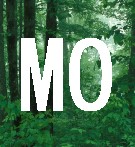 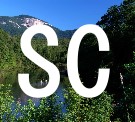
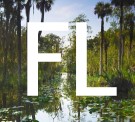
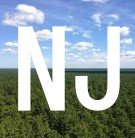
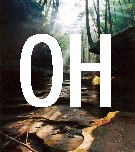
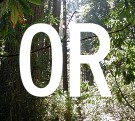
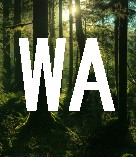
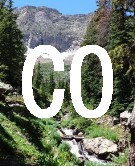  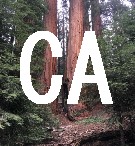
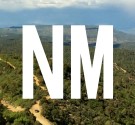
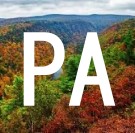

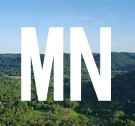
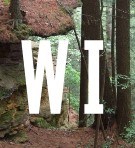


| ||||||||||||||||||
Bigfoot/Sasquatch-related Sound Recordings
- Northwest 911 Call (Puget Sound, Washington)
- Whoops and Knocks (Sierra Nevada Mountains, Eastern California)
- Ohio Howls; Mississippi Howls
- Interaction Vocalizations - aka "Samurai Chatter"
(Sierra Nevada Mountains, California)
- "Florida Howl"
- the first howl recording from the state of Florida
- Class B Encounter (Michaux State Forest, southeast Pennsylvania)
- Bipedal Walking (outside Honobia, Southeast Oklahoma)
Feel free to email the sound files as attachments to anyone you know who lives
in a sighting area. Ask them if they have heard any of these sounds before.
If they have, please ask them to let us know through the BFRO's
sighting report form (click here)
Northwest 911 Call
- Download the Northwest
911 Recording (MP3 format; 670KB)
(or right-click on the link and save the file)
This sound file contains excerpts from an authentic 911 call from the Pacific Northwest. The incident happened on the Kitsap Peninsula, Washington State, in the 1990's (not the 1970's).
The sheriffs did show up eventually, but the figure was gone at that point--it didn't stick around for long.
The dispatcher's protocol was to verify man's name and address in the beginning. She does that in the unedited, original version of the 911 call. The original version also has some pauses where only the dispatcher's typing is heard.
In order to make the sound clip as compact as possible, everything extraneous has been removed. The clip only contains the parts of the conversation related to the appearance and behavior of the figure outside. All other dialogue is either irrelevant or personal.
This recording, and several others from the field, were collected over the past four decades by Ron Morehead (California) and Al Berry (California). Their collections of recordings are available on CD We highly recommend them.
The 911 call is available on the Sierra Sounds, Bigfoot Recordings, Volume 2 CD. The CD contains the 911 call along with other historically important clips from Berry-Morehead Expeditions in the 1970's.
Moaning Howls ("Ohio Howls")
Moaning howls are thought to be made by large, male sasquatches.
- Click here for the 1994 Ohio Howl This
was the first recording ever obtained of a long moaning howl vocalization.
It was recorded in Columbiana County, in the hills above Wellsville. These
moaning siren-like howls can be heard on occassion late at night in the Fall,
echoing off hills on both sides the Ohio River. West Virginia is on the other
side of the river.
- The 2004 Mississippi Howl clip
- A Shorter Segment (MP3 format; 239KB)
- The Full Recording
(MP3 format; 387KB)
Warning: The recording is soft--you will likely need to turn up your volume quite a bit to hear it well.
Moaning howls are thought to be made by large, male sasquatches.
The Mississippi Howl is the second recording of this type. It was recorded by BFRO Investigator John Callender (an airline pilot from Seattle) in a forested part of Mississippi in December 2004, near a large military reserve. The rural area where the recording was made has had many sightings by local residents.
Whoops and Knocks
- Download a 1974 clip of whoops and knocks from California (MP3 format; 125KB)
The sound file contains a string of sound clips from the Berry-Morehead Expeditions in the 1970's. You may recall the old "In Search Of.." episode about Al Berry and these recordings.
This clip, along with others from a remote section of the Sierra Nevada
Mountains, is available on the Sierra Sounds, Bigfoot Recordings
CDs, available at www.bigfootsounds.com
.
Interaction Vocalizations (aka "Samurai Chatter")
A growing number of people in the BFRO have heard sounds similar to what
you hear in the recording below.
- Clip 1: Ron Moorehead and one of the animals
(MP3 format; 360 KB)
- Clip 2: The "old man" alone (MP3 format; 170 KB)
This recording was obtained in a remote part of the Sierra Nevada Mountains
in California. Ron Moorehead can be heard in the foreground shouting out to
immitate one of the animals. He tries to encourage the animal to continue making
sounds.
Class B Incident in Michaux State Forest, Pennsylvania, early November 2005
- Download the Michaux Class B incident recording
(MP3 format; approx. 3 Megabytes)
(or right-click on the link and save the file)
This is a walkie-talkie exchange during a Class B (compromised visibility)
encounter on a BFRO expedition. It was recorded by documentary filmmaker Chris
Noel during the 2005 expedition in Michaux State Forest, Pennsylvania. The woman
speaking is Lorrie G. - a sheriff deputy from New Jersey.
Lorrie is a keen observer of bodies in motion. Lorrie's day job is transporting
felons to courts, and walking unarmed through holding pens of unrestrained jail
inmates. She has also worked with surveillance teams for the sheriffs department.
After the incident Lorrie described the figure she observed in greater detail.
It was upright and very large. She could see the shape of its head, its shoulder,
and clearly observed its large swinging arms as it walked up the road toward
her. She watched one figure, but insisted there was more than one nearby.
Not long after the end of the recording the figures departed and didn't return.
During the incident Lorrie is encouraged to "try to talk to it". This
should not be misinterpreted to mean she should try have a conversation with
one. Rather, it is a short-hand way of signaling her to do certain things, involving
voice and gestures, that had been explained to her earlier in the trip. There
are several purposes for these actions. One purpose is to encourage the animals
to approach closer. Other animals, such a bear, cougars, deer, etc., tend to
move away when people approach them and make these kinds of sounds. Sasquatches
respond differently.
The act of gesturing and speaking in their direction sometimes provokes "Samurai
Chatter" -- the speech-like vocalizations that are occassionally heard
when these animals are nearby. It's a rare priviledge, and an intense experience,
to hear this class of vocalizations in person (refer to the interaction
vocalizations clip). It's also a key scientific observation. Provoking this
special class of vocalizations is one priority of every BFRO expedition.
The suggestion of speech-like vocalizations will seem outlandish to some. Speech,
as we know it, is something that humans assumed was unique to humans. One of
the important things this species (genus?) will demonstrate, is that "human-like"
speech is an ability that can arise when an ape species evolves to walk upright
(i.e. becomes "bipedal" (pronouced "by-PEH-dull")). Humans
are bipedal apes. Sasquatches are also bipedal apes. As bipeds, both humans
and sasquatches had the potential to develop the anatomical structures in the
neck, face and brain, capable of producing speech-like sounds.
A priority for the BFRO now is to teach good people how to locate the
habitats of these animals, and how to provoke these kinds of interactions. Spreading
this knowledge to the right individuals in the U.S. and Canada, will inevitably
help accumulate more knowledge about these elusive animals. The "discovery"
in North America (it may happen in Malaysia first) will likely be a direct by-product
of the BFRO's accumulation of knowledge about their habitats and interaction
behaviors.
As Jane Goodall pointed out : "One should not have to be killed in order
to establish their existence. A combination of DNA evidence and very good video
footage should be sufficient."
DNA evidence and very good footage (or photos) will be a direct by-product of
identifying their most consistent haunts, and their interaction behaviors.
Click the link below to launch the clip of Lorrie's encounter during the 2005
PA expedition.
- Clip : Class B at Michaux (MP3 format;
Approx. 3 megabytes)
Bipedal Walking - Southeast Oklahoma - November 2005
This field recording was obtained in McCurtain County, Oklahoma, a few miles
south of Honobia (Le Flore County). It was recorded during the 2005 BFRO Oklahoma
Expedition by Investigator Dennis Pfohl from Colorado.
This is a good example of what people describe as the sound of a large, bipedal
(not four-legged) animal walking through the woods.
The night this clip was recorded, a search and rescue professional (Rob B.)
attending the expedition said a tall massive figure came up to the vehicle he
was sleeping in (a 4x4 pickup). The animal pushed up and down on the tailgate
with tremendous force. It then walked around to the door of the pickup. It leaned
over the hood of the raised 4x4 from the side, to look down through the front
windshield. It then it grabbed the door handle and rocked the vehicle a few
times. It pounded lightly on the door a few times before walking away. Rob couldn't
move while it was happening. He was laying on the seat, in his sleeping bag,
looking up through his slighty fogged windows. He could see the figure's size
by its silhouette against the starry sky, when it leaned over the hood of the
raised vehicle to look through the windshield.
The figure walked in the direction of Dennis Pfohl's vehicle and recorder. Dennis
Pfohl was parked a short distance away along the creek. The noise in the background
is the wind and creek noise. Dennis was asleep but his digital recorder was
running.
Five people were with this group at this very remote spot. No one of them were
awake and walking around the vehicles when this happened, shortly after 4am.
- Clip : Bipedal Walking near Honobia,
Oklahoma (MP3 format; Approx. 750 kb)
Growls and Whistling
Click here to
play the clip.
This clip is from a collection of recordings from the Berry & Morehead
expeditions (1970's) in the Sierra Nevada Mountains in California.
The microphone was hanging from a tree branch. It was attached to a long
cord running into a crude log shelter. Inside the shelter, journalist
Al Berry of the Sacramento Bee newspaper was recording the outside sounds
on a reel-to-reel deck.
The shelter was a large, teepee-shaped log structure built by hunters.
When the men would open the make-shift door of the shelter at night, the
shadowy intruders would run back among the large trees. They would only
come close to the exterior of the shelter when the men stayed inside.
The layers of logs and tarps used to construct the shelter made it difficult
to look out through any cracks. The intruders apparently wanted to be
heard, but not seen.
The creatures making these sounds are definitely not bears. Bears growl,
but they don't whistle.
For more on the 1970's Berry & Morehead Expeditions, and their collections
of sound recordings.-->